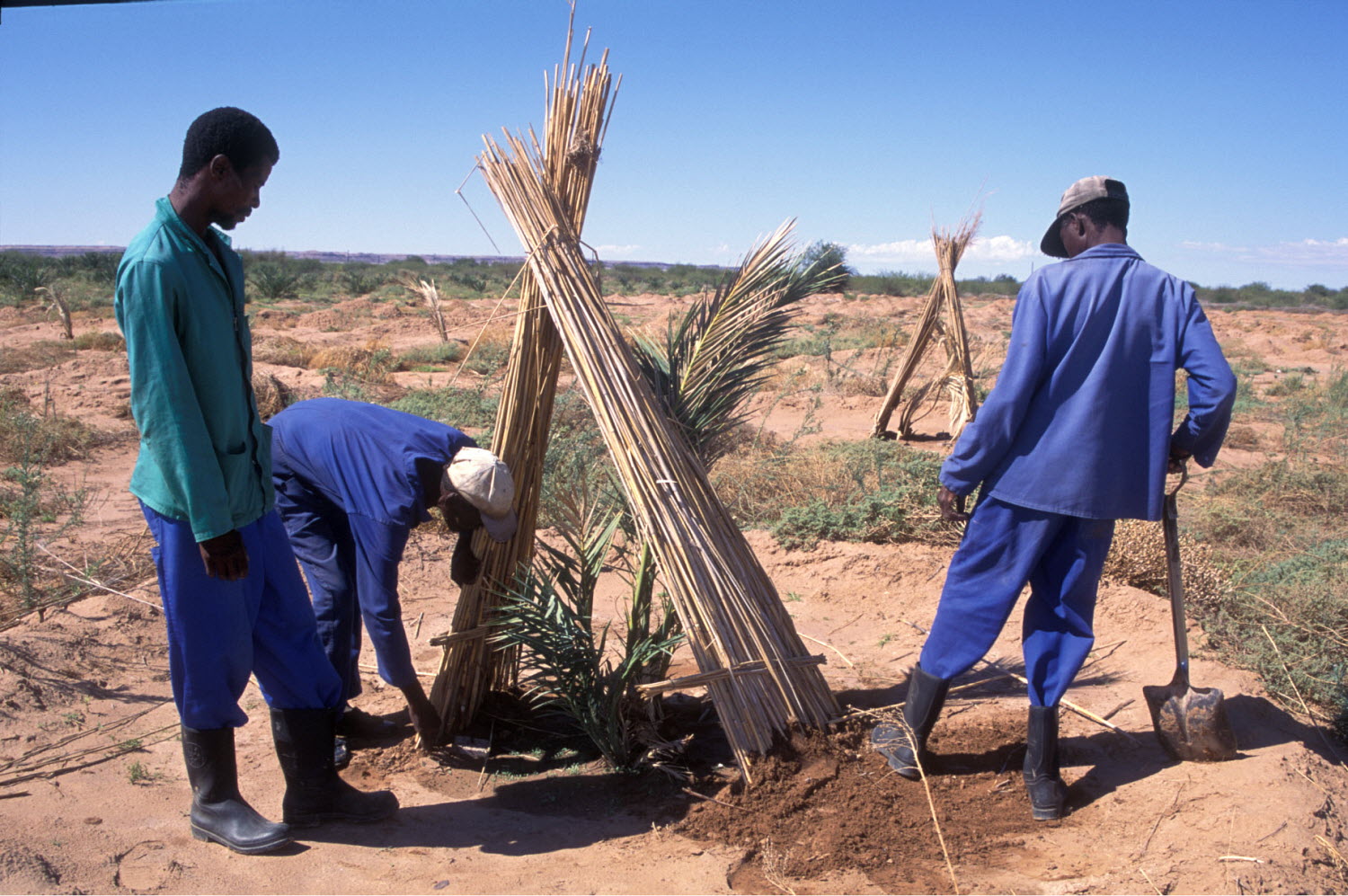
Integrated landscape management to reduce, reverse and avoid further degradation and support the sustainable use of natural resources in the Mopane-Miombo belt of Northern Namibia
Country overview
Deforestation, uncontrolled wildfires and unsustainable use of natural resources are increasingly fragmenting and destroying Miombo-Mopane woodlands across the Kunene-Cuvelai and Okavango river basins, all of which originate in Angola and are internationally shared and sustain populations on both sides of the Angola-Namibia border. In northern Namibia, resettlement programs contributed to population movements, increasing pressures on natural resources. Such pressures, coupled with poverty, unsustainable land use and production practices, and exacerbated by climate change impacts, have resulted in extensive land degradation. This has been observed in areas around Etosha National Park (Oshikoto), Ruacana Village in Omusati and close to the Namibia-Angola border in Kavango East. These areas were selected as project sites and thoroughly studied during the project’s preparatory phase to confirm current patterns of land use and status of land degradation. Subsistence farming systems and unsustainable range management are observed to be the main culprits of land degradation in northern Namibia, while mining activity and tourism are likely to accelerate land-use changes in future years unless land use can be adequately planned, sustainably managed and regulations enforced.
How does the DSL-IP support Namibia?
The project seeks to transform the management of production systems within Namibia’s Miombo-Mopane Woodlands using an integrated landscape approach that is focused on avoiding, reducing and reversing land degradation in alignment with Namibia’s commitment to the UN Convention to Combat Desertification to achieve Land Degradation Neutrality (LDN) by 2030-2040. This project will demonstrate how LDN can be achieved through the adoption of sustainable, integrated management of multi-use Miombo-Mopane dryland landscapes in parts of the Kunene-Cuvelai, Etosha and Okavango river basins and, additionally, applying a transboundary focus whenever relevant.
Fundamental to the success of the landscape approach is the opportunity to engage with stakeholders across all sectors and levels of governance having vested interests in the target landscapes. Thus, the project’s objective to sustainably manage these multi-use dryland landscapes will be achieved by addressing land-use management challenges at different scales through a collaborative, gender-sensitive and multi-sectoral approach. The achievement of LDN will also deliver national and global benefits in reduced carbon emissions and increased carbon storage (1 301 476 tonnes of CO2e over 20-year period) to contribute to the delivery of Namibia’s commitments to the UN Framework Convention on Climate Change.
The project design comprises three components:
- Component 1: addresses the enabling environment in terms of policy, regulatory, planning and participatory frameworks, including the preparation of Integrated Land-Use Plans (ILUPs) for each of the target landscapes.
- Component 2: focuses on the practical application of such frameworks, notably implementing the ILUPs in their respective landscapes, using sustainable land and forest management practices to avoid, reduce and reverse land degradation across a mosaic of land-use systems. Uptake of sustainable practices will be supported by significant investments in training, capacity development and rural extension services, heralded by the introduction of Farmer Field Schools and Agro-Pastoral Field Schools networked across landscapes; as well as in Forest-Farm Facilities, such as Community Seed Banks, and support to Forest Farm Producer Organizations. Sustainable land and forest practices will also be incentivized through the strengthening or creation of green value chains, with improved markets and access to them as appropriate.
- Component 3: strengthens knowledge, learning and collaboration on LDN-related matters, as well as monitoring and reporting. Mainstreaming knowledge gained, best practices and lessons learned will be supported within and between landscapes as well as nationally, including technical expertise in monitoring and reporting on LDN, and both regionally and globally through provision of a Regional Exchange Mechanism that feeds into the Impact Program’s Global Exchange Mechanism.
Project’s Target Contributions to GEF-7 Core Indicators
| Nr Core Indicator | Project Core Indicator | Expected Result |
| 3 | Area of land restored (Hectares) | 200 |
| 4 | Area of landscapes under improved practices (excluding protected areas)(Hectares) | 360 000 |
| Total area under improved management (Hectares) | 360 200 | |
| 6 | Greenhouse Gas Emissions Mitigated (metric tons of CO2e) | 1 301 476 (over 20 year period) |
| 11 | Number of direct beneficiaries disaggregated by gender as co-benefit of GEF investment | 10 000 (40% female) |
